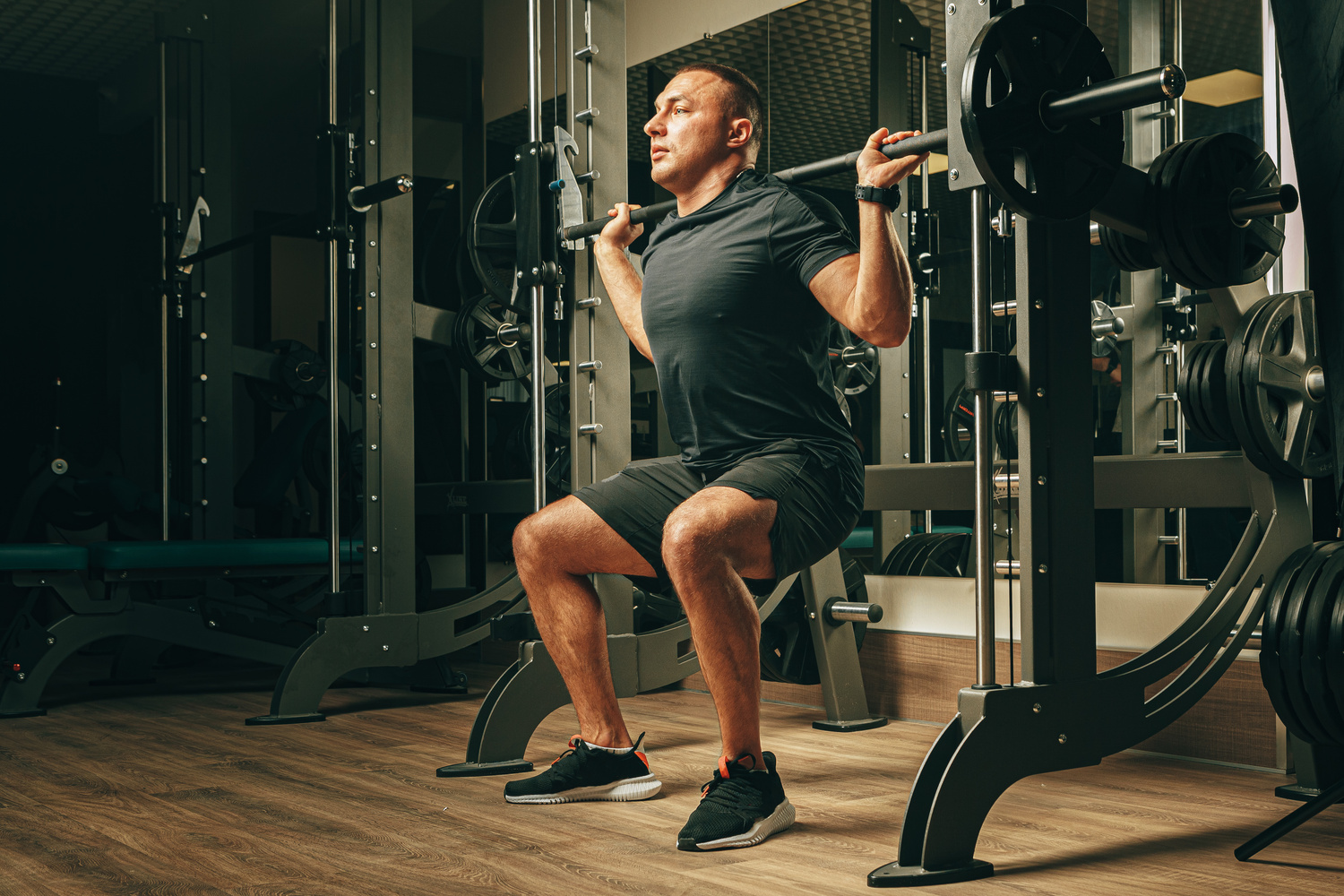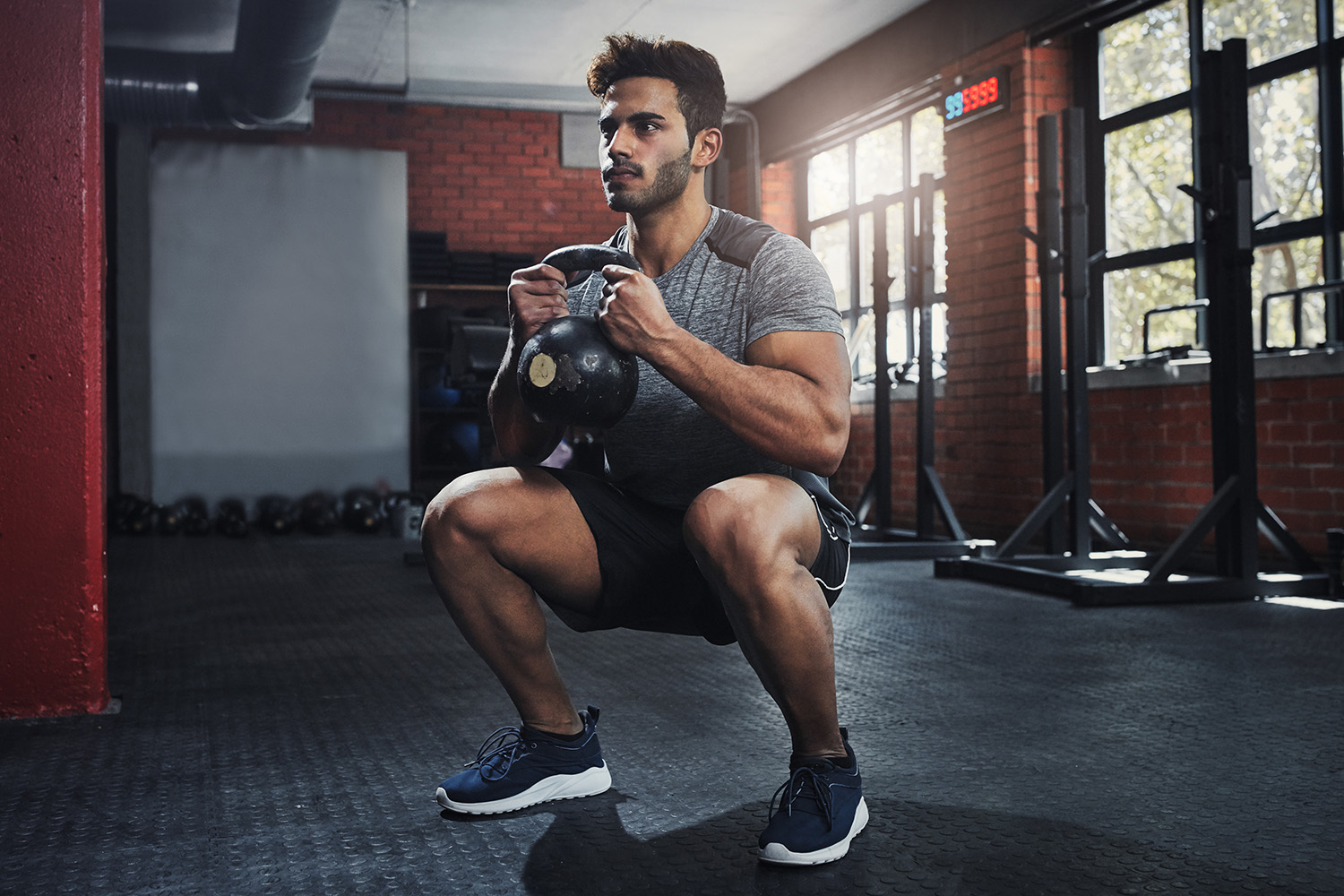Are you looking to add some strength training to your lower body workout? Consider adding the back squat to your routine.
The back squat is a reasonably advanced compound exercise that activates muscle groups in your lower body. While back squats might not be for everyone, they are a foundational strength training exercise that can yield big gains if you can master your form. From boosting testosterone to building muscle mass, there are many reasons to include back squats in your workout routine. Here’s a guide on how to do the back squat and the benefits this exercise will bring to your overall fitness level.
What are the benefits of back squats?

Back squats provide a multitude of benefits, including:
- Enhancing your core stability, including your obliques, erector spine, and rectus abdominis.
- Stimulating the release of anabolic hormones like testosterone.
- Boosting your metabolic rate and athletic performance.
- Building lower body strength that amplifies your ability to perform explosive movements in sports and everyday life.
What muscles does the back squat work?
While back squats are mainly a posterior chain exercise, they’re a game-changer because they work multiple muscle groups as well as major muscles in your lower body, such as your:
- Quads
- Hamstrings
- Glutes
- Core muscles
- Calves
- Spinal erectors
- Adductors
- Abdominals
- Trapezius
How to do a barbell squat

Careful execution of the barbell back squat is crucial for optimal safety and to reduce your risk of injury. The focus should be on mastering your form rather than increasing reps or weight.
How to do a barbell squat:
- Set up the barbell on your upper traps, making sure it isn’t resting on your neck. Your toes should be slightly angled out, and your feet should be about shoulder distance apart.
- Engage your core and carefully bring your hips back to lower yourself down into the squat position as if you’re sitting on an invisible chair.
- Squat down until your thighs are about parallel to the floor. You can go deeper if you’d like, as long as you maintain proper form to perform the movement safely.
- Push through your heels to carefully bring yourself back up to the starting position.
- Repeat until the set is complete.
Top tip: Try to keep your chest up and make sure your knees track over your toes.
How deep should you squat?

How deep you should squat depends on several factors, varying from person to person. These include your fitness level and long-term goals. Before considering squatting deeper, you should be able to master bringing your thighs parallel to the floor. If you have good mobility in your ankles, hips, and knees and can maintain proper form throughout the movement, you can squat deeper.
If you keep rounding your back, you’re probably going too far down. You should work with a lighter weight and a lesser drop until you build more strength and mobility over time. Squatting deeper activates more muscles and makes the exercise more challenging, but you’ll still get results by squatting down until your thighs are parallel to the ground.
To modify the exercise and make it easier, you can incorporate box squats and sit down on a sturdy surface like a plyometric box or bench. Squatting down to a box increases your stability.
Variations

Mix up your workout by throwing in a back squat variation, such as:
Pause back squat: Pausing at the bottom of the movement ramps up the challenge. Try to make sure you come to a complete stop at the bottom of the full range of motion.
Low bar back squat: The lower bar back squat position is often more popular with powerlifters because it decreases your range of motion and puts a little more emphasis on some of the muscles in your posterior chain.
1 ½ back squat: The 1 ½ back squat involves performing one full rep followed by a half rep before completing the exercise. Your muscles will have more time under tension.
Top tips to perfect your form

Here are some top tips to perfect your form:
- Choose the position that suits you best. With the high bar position, you place the bar across your upper back, just under the base of your neck. With the low bar position, you place the bar about two or three inches lower, which could enable you to lift more.
- Try to ensure your feet are about shoulder width apart and that your toes are pointed slightly outward.
- When starting your squat, bend at your hips and knees at the same time and squat to a depth that feels best for you.
- Try to keep your hands close to your shoulders with your elbows pointing out.
- Engage your core throughout the exercise.
Back squat alternatives

When you want to try something different, there are plenty of back squat alternatives. Here are some of the best alternatives:
- The front squat
- The goblet squat
- The Bulgarian split squat
- The landmine squat
Who should do the back squat?
Powerlifters, strongman athletes, bodybuilders, and weightlifters often perform the barbell back squat because you can typically lift heavier reps. If you don’t feel comfortable performing the back squat, you should choose other exercises and work on building your strength and mobility. This exercise won’t be suitable for everyone, and it depends on your mobility and fitness level and whether you have any injuries or restrictions. Try to perform the alternatives before attempting the barbell squat.
How many sets and reps should you do?

Someone who is just starting out with the back squat should do a different number of sets and reps compared to someone who’s been performing this movement for a while. How many sets and reps you should do depends on your current fitness level and your goals.
Here’s a general guide:
- Beginners: Shoot for three sets of up to 10 reps with a lighter weight and focus on your technique.
- To grow muscle: Try four or five sets of six to eight reps with a moderate weight.
- To maximize strength: Try four to eight sets of three to five reps with a heavy weight that still allows you to maintain proper form.
Common mistakes to avoid

Remember, using the correct form is crucial when doing back squats to avoid injury. These are among the most common mistakes to avoid when performing the barbell squat:
- Dropping your chest. Try to keep your chest up.
- Not warming up.
- Moving your head or neck. Try to keep your head and neck neutral.
- Caving your knees in.
- Lifting your heels or toes up off the ground.
- Hunching your back. Try to keep the angle of your torso consistent.
- Shifting your weight. Your body weight should be evenly distributed across your feet.
With persistence, your hard work will pay off, and you’ll master the barbell squat over time.




